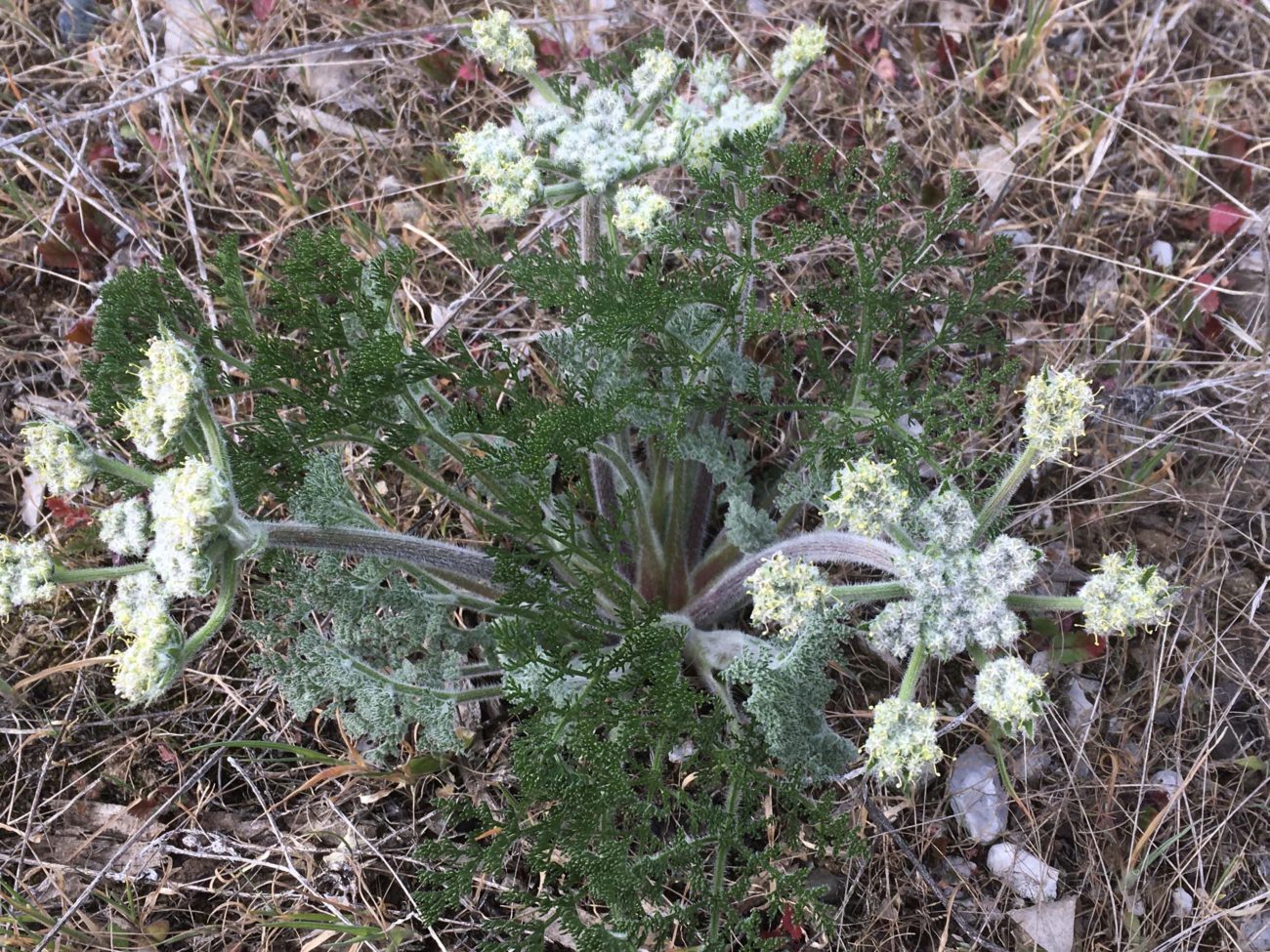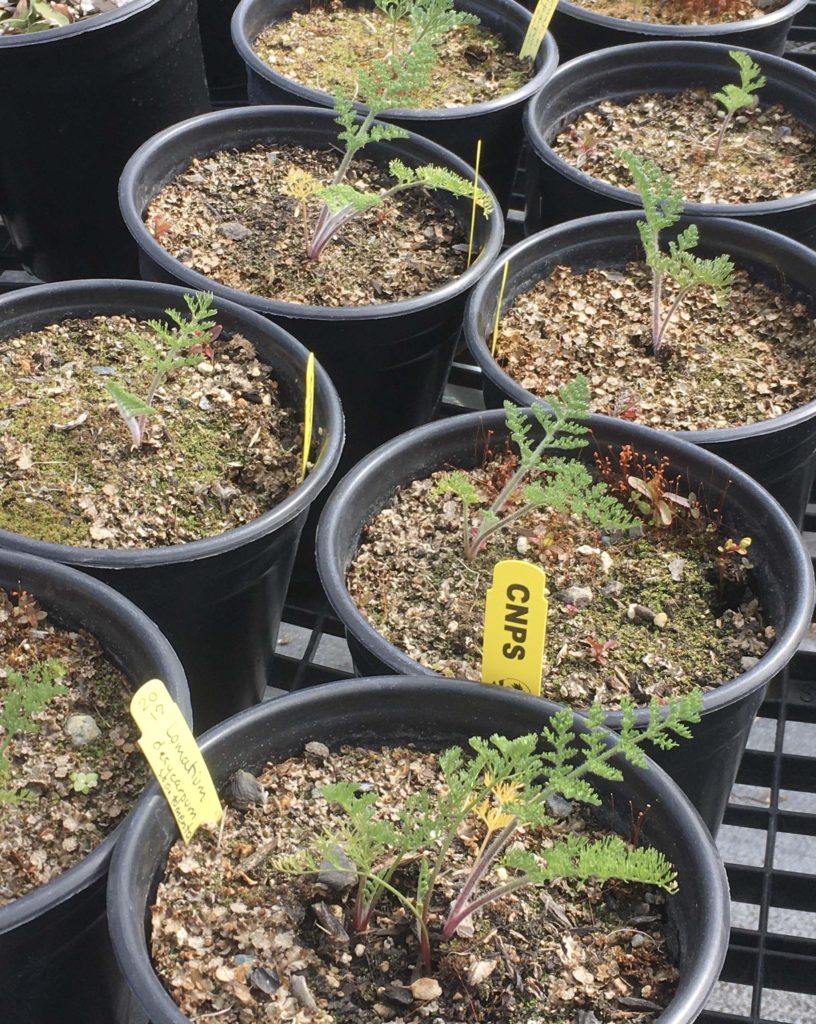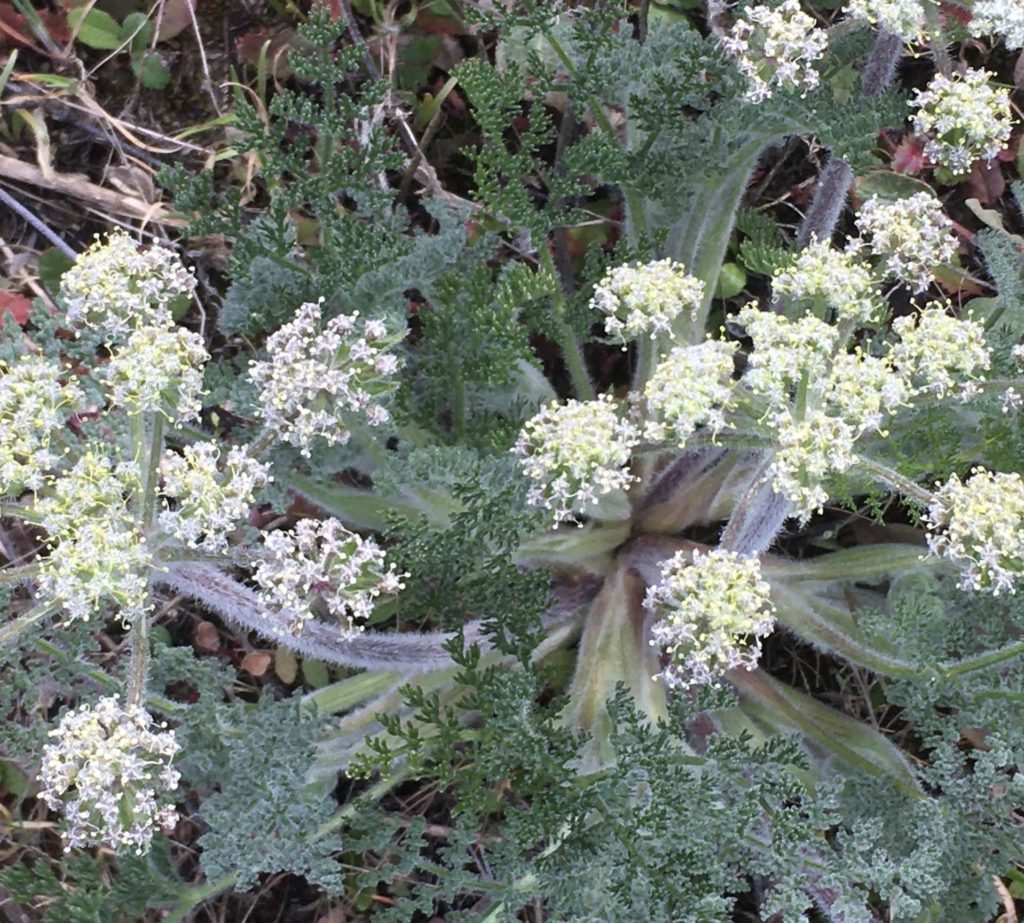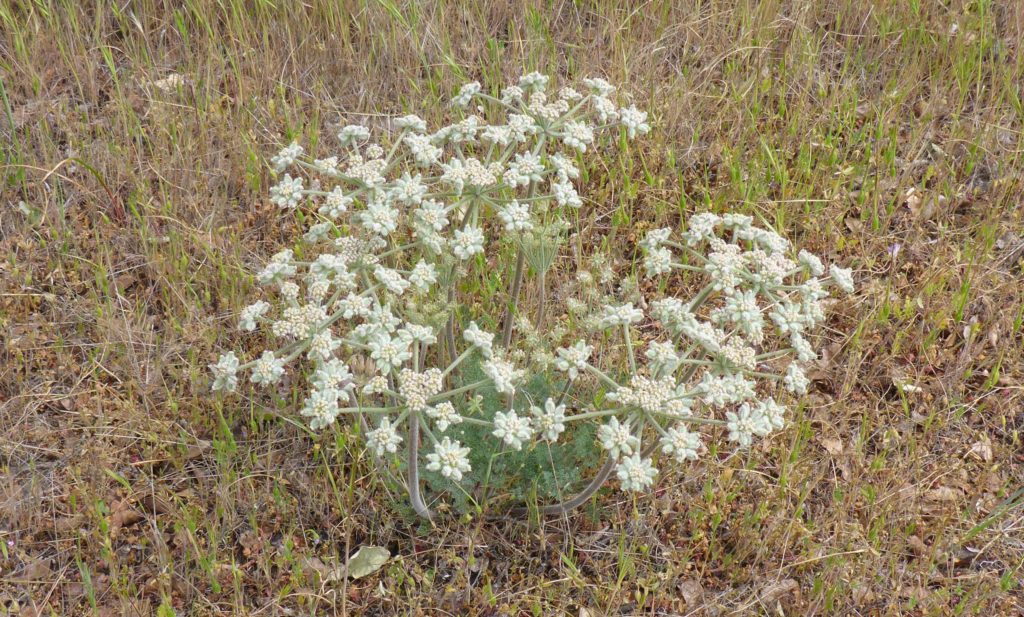
There are about 14 woolly fruited lomatium (Lomatium dasycarpum var. tomentosum) in stock for the Spring 2022 Native Plant Sale.

This perennial native is perfectly adapted for drought, requires no water once established, and is excellent for pollinators. It grows in winter, blooms in early spring, and above-ground parts become deciduous by mid summer. Lacy leaves emerge again with winter rain.

It grows with ookow (Dichelostemma spp.) and naked buckwheat (Eriogonum nudum) in rocky soil. Anise swallowtail (Papilio zelicaon) caterpillars will consume the foliage without harming the plant on their way to becoming butterflies. ~MaryAnn McCrary

